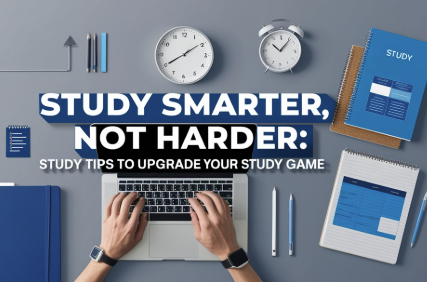Digital study platforms have transformed the way high school students access, organize, and engage with learning materials. These tools offer flexibility, personalization, and collaborative features that support a wide range of study styles. From note organization and flashcard creation to practice quizzes and interactive learning modules, digital platforms can help students study smarter—not harder—and develop lifelong learning habits.
Choosing the Right Platform
Not all study platforms are the same, so selecting one that aligns with your learning goals is key. Popular options include Quizlet, Khan Academy, Notion, Google Classroom, Microsoft OneNote, Brainscape, and StudySmarter. Quizlet excels in flashcards and gamified review tools for memorization. Notion is a customizable workspace perfect for project management, note integration, and personal databases. Khan Academy provides structured lessons with videos, quizzes, and practice tasks, particularly strong in math, science, and standardized test prep. Google Classroom is widely used by schools to distribute assignments, track grades, and facilitate teacher-student communication. Microsoft OneNote mirrors physical notebooks with easy sectioning and freeform note input, and Brainscape uses spaced repetition to optimize memory retention.
Organizing Materials Effectively
To make the most of digital platforms, students should create a structure that mirrors their academic schedule. Folders, tags, or subpages can be used to group content by subject, chapter, or even learning objectives. In platforms like Notion or OneNote, students can embed documents, links, diagrams, or even code snippets to create a comprehensive digital notebook. Color-coding and custom icons can help distinguish between courses and types of content, making navigation intuitive.
Templates also save time and create consistency. Many platforms allow users to create or download templates for note-taking, weekly planning, exam preparation, or goal tracking. These reusable formats streamline the study process and help students focus more on content and less on formatting.
Interactive and Personalized Learning
One of the main benefits of digital study platforms is the ability to personalize learning experiences. Apps like StudySmarter and Albert.io tailor quizzes and study sessions based on individual performance, helping students focus on their weakest areas. Duolingo uses gamification to teach language skills, while platforms like Edmodo and Edpuzzle incorporate videos with embedded questions for active engagement.
Many digital platforms also use analytics to track progress over time. Students can view their performance metrics, understand their learning trends, and adjust their strategies accordingly. Features like goal-setting dashboards, streak counters, and achievement badges provide motivational boosts and keep students accountable.
Collaboration and Shared Learning
Digital platforms encourage peer interaction through shared folders, collaborative editing, and discussion boards. Google Docs, OneNote, and Notion allow students to co-create study guides, compare notes, or review assignments together. Study groups can use these tools to build quiz banks, brainstorm ideas, and give feedback in real-time, regardless of location. Discord, while not a formal study tool, has grown in popularity for hosting group study sessions, especially for virtual learners.
For group projects, platforms like Trello and Monday.com help manage timelines, assign tasks, and track progress in a visual and interactive way. Students learn valuable organizational and teamwork skills while ensuring that learning remains collaborative and productive.
Tips for Success
- Set a daily or weekly routine to interact with your chosen platforms.
- Use multiple tools together: for example, organize your study plan in Notion, review key terms in Quizlet, and complete practice problems on Khan Academy.
- Create summary notes after every major topic and store them in a searchable format.
- Use built-in timers or third-party focus apps (like Forest or Pomofocus) to avoid multitasking.
- Archive old content after each term to keep your workspace clean but retain access for review.
Staying Safe and Balanced
While digital tools are efficient, screen time and notifications can become overwhelming. Practicing digital mindfulness by limiting distractions, taking regular breaks, and using blue light filters can help reduce fatigue. Apps like Calm and Headspace offer guided mindfulness breaks that students can use between sessions.
Offline balance is equally important. Students should integrate physical activities, sleep, hydration, and in-person interactions into their routine to support overall cognitive performance and well-being. Using digital platforms as part of a healthy study-life balance ensures long-term sustainability.
The Future of Digital Learning
Digital study platforms are continuously evolving. With advances in artificial intelligence, virtual reality, and adaptive learning, the future promises even more personalized, immersive, and intelligent educational experiences. Students who learn how to navigate and utilize these platforms effectively will not only perform better in school but also build digital literacy skills vital for college and careers.
Conclusion
By selecting the right platforms and using them with intention, students can maximize their learning potential and build habits that support success in high school and beyond. Digital study tools are not just supplements—they can be central to an organized, efficient, and engaging academic routine. With thoughtful integration, students gain control over their learning journey and prepare themselves for success in a digital-first world.


